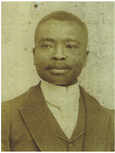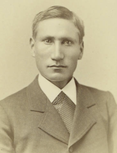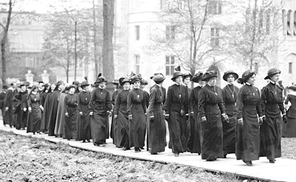A Brief History of AED and the Episcopal Diaconate
|
A national organization to enable distinctively diaconal service in The Episcopal Church (TEC) has existed in many forms, and the development of the organization is intertwined with the development of the order. AED has served various needs in the several distinctive “waves” of diaconal theology which the church has experienced in the last 150 years.
An early Protestant Reformation view held that a plethora of subordinate (or “minor”) orders to that of priest or pastor was undesirable. Most Protestants eliminated the diaconate or kept it as a lay “office,” concerned with providing social service to the unfortunate. Those Protestants, including Anglicans, who maintained the diaconate maintained it only as a temporary step to the priesthood called the “transitional diaconate.” This usage has been maintained in TEC Church. However, in the United States from the 1840’s through the 1930’s, the Episcopal Church also ordained men as deacons to serve as missionaries to ethnic groups and in isolated communities. These men were generally African- or Native Americans of the ethnic community they served, and remained deacons for their entire ministries. Among them was the Episcopal saint David Pendleton Oakerhater (O-kuh-ha-tuh), a Cheyenne. From 1885 through 1970, many Episcopal bishops set apart women as deaconesses by prayer, and sometimes by the laying on of hands, to care for the poor, sick, and needy. These women modeled their ministries on that of the German Lutheran Church, which had revived the ministry to assist in alleviating the distressing social conditions created by the Industrial Revolution. In Chicago in 1953, the Central House for Deaconesses was founded for the training of women in this lay office. (Meet several deaconesses.) In a separate development, from 1952 through 1970, the Episcopal Church ordained men as "perpetual deacons,” to serve in parishes as sacramental and pastoral assistants for the booming post-war Church. These few men were generally older, privately trained by their supervising priest, and ordained to serve only their sponsoring community. By the late 1960’s, churches world-wide began to question subsuming the ancient order of diaconate under priestly identity, and of surrendering the useful icon of an order that embodies the call of all the baptized to dedicate themselves to service. The second Vatican Council renewed the Roman Catholic “permanent diaconate” as a permanent position for men, including those who were married. The Episcopal Church, influenced by the international wave of theology advancing the renewal of the order, renewed the order of deacon in 1970, and citing the biblical record, for the first time allowed women to be ordained as deacons. The remaining Episcopal deaconesses (sometimes to their dismay) were deemed deacons, and the office of deaconess was abolished by canon. After extensive debate, the traditional period of temporary transitional diaconate prior to priesthood was also retained. Beginning in 1971, deacons generally served in social care ministries outside a parish. Until 1976, many of these deacons were seminary-trained women with a priestly call. However many others, both men and women, had a liturgical base in a parish, with their identity vested in service outside. The National Center for the Diaconate was created in in 1974 to advocate for the growth nation-wide of this renewed order and to develop resources for the task of forming deacons, who generally were not trained in seminaries. The ordination of women to the priesthood freed the diaconate to mature into its own. By 1986, the Center had evolved into the North American Association for the Diaconate (NAAD). NAAD assisted Episcopal deacons to incorporate into their identity later developments of diaconal theology, sparked by new biblical theological insights in the 1990’s. New research highlighted the ancient deacons’ role as agents of the bishop, and accentuated their role as prophet, interpreter, and catalyst of social change. In 2003, the General Convention of TEC changed the diaconal canons to more accurately reflect evolving diaconal theology, and set out distinctive guidelines for diaconal training, life and work. Again, the transitional diaconate was debated and retained. In response to the initiative of the Anglican Deacons Canada, who had founded their own community, NAAD adopted a new name: The Association for Episcopal Deacons. Canadian deacons retain “blended membership” in AED, and the Presidents of both organizations serve on each other’s boards. Today, servanthood remains a major feature of diaconal identity as deacons enlist, train, and support baptized persons in ministries of care, or lead the church’s efforts in social action and justice. Many deacons are highly skilled professionals in their areas of ministry. Some deacons serve the church in paid employment as diocesan executives, educational specialists, and in social action ministries. AED has moved into the 21st century with a clear conviction that it is needed more than ever to support the growing order. Today there are some almost 3,000 deacons in the Episcopal Church and about 300 in the Anglican Church of Canada. All dioceses but one now ordain deacons. AED has also added a new tagline into its logo to indicate its vision for the future: that diakonia is constitutive of Christian identity, and our call is “Engaging the Diakonia of all Believers.” |
|



